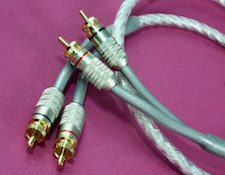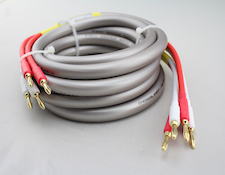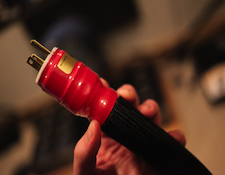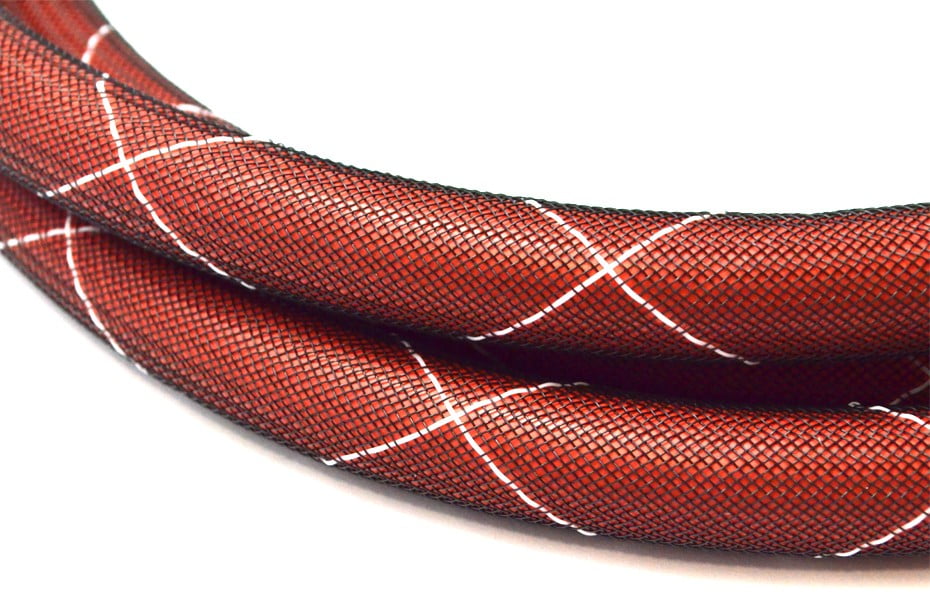It’s the time of year for saving money!
In the last few articles of this continuing series on how to get the most value for your Hi-Fi dollar, I’ve concentrated on “High Intention” systems (The ones where we really try to re-create the musical experience, instead of just providing a pleasant musical background) and said that one of their defining characteristics is that they tend to be constantly changing as their owner’s budget and level of commitment changes and as new products and technologies appear to catch his buying attention.
I said, too, that that could also present us with a particular kind of problem:
 In Part 10 of this series I wrote about how a “bright-sounding” product (a preamp, for example) can be cancelled or compensated-for by a “dark-sounding” something else (a dark-sounding cable, for example) and wind-up producing a system with near perfect tonal balance. I also wrote about how changing that (cable) to something with a neutral tonal balance can actually make the system sound “bright” and make a listener think that it was the new cable that made the system bright-sounding instead of (as was actually the case), just revealing the hitherto hidden brightness of the (preamp). The opposite is, of course, also true: Replacing a neutral-sounding component with a bright or dark one can make the system sound bright or dark, and replacing a bright for a bright, a dark for a dark, or a neutral for a neutral product can seem to make no audible effect at all.
In Part 10 of this series I wrote about how a “bright-sounding” product (a preamp, for example) can be cancelled or compensated-for by a “dark-sounding” something else (a dark-sounding cable, for example) and wind-up producing a system with near perfect tonal balance. I also wrote about how changing that (cable) to something with a neutral tonal balance can actually make the system sound “bright” and make a listener think that it was the new cable that made the system bright-sounding instead of (as was actually the case), just revealing the hitherto hidden brightness of the (preamp). The opposite is, of course, also true: Replacing a neutral-sounding component with a bright or dark one can make the system sound bright or dark, and replacing a bright for a bright, a dark for a dark, or a neutral for a neutral product can seem to make no audible effect at all.
So if that’s the case; if changing one element of your system can significantly change your system’s tonality, but the sound that results isn’t necessarily the sound of the changed element, how can you tell what’s really going on in your system?
That question is complicated by the fact that YOU CAN NEVER LISTEN TO JUST ONE THING! How can you listen to speakers, for example, if they’re not in a room (which will have an effect on what you hear) or if they’re not driven by an amplifier (possibly off a preamp) and a signal source, both or all of which may have their own characteristic sound, and all of which must be hooked together with cables, which might also have a sound of their own? About the closest you can ever come to hearing just one thing in isolation is to listen to a signal source (a CD player, a streaming device, or whatever) directly through a pair of headphones, but even then you’d still have to wonder about possible colorations in the headphones keeping you from hearing the source as it really sounds.
With it never possible to listen to anything in your system all by itself, how can you ever know what any part of your system actually sounds like? And if you can’t know that, how can you know which part or parts of your system you should keep and which you should change to bring it closer to musical reality?How, for that matter, if you can’t ever know for certain what any individual system component sounds like except as part of a system, can you ever put together a truly “neutral” (tonally uncolored) system? Where should you start? And why?
 My own personal recommendation for a starting point is the cables. Why? Well, consider this: For me, at least, what I want to create is a system that is sonically neutral, and that will allow me to hear the music on whatever recording I choose to play as closely as possible to the way it actually sounds, with no distortion, and with nothing either added or subtracted. There are only two ways that I know of that this can be achieved: I might be able to use “compensating flaws” (too bright canceling too dark) to eliminate system errors and come up with, at least (not considering other things, like transient response, imaging, and soundstaging), a neutral tonal balance. This DOES work, and can give perfectly satisfactory – even thrilling – results. The problem with it, though, is that we’re talking about a constantly-changing “High Intention” system, and every time I change any one thing about it, I may have to (with difficulty and at potentially great expense) also change all of the other components that I’ve been using to cancel its flaws.
My own personal recommendation for a starting point is the cables. Why? Well, consider this: For me, at least, what I want to create is a system that is sonically neutral, and that will allow me to hear the music on whatever recording I choose to play as closely as possible to the way it actually sounds, with no distortion, and with nothing either added or subtracted. There are only two ways that I know of that this can be achieved: I might be able to use “compensating flaws” (too bright canceling too dark) to eliminate system errors and come up with, at least (not considering other things, like transient response, imaging, and soundstaging), a neutral tonal balance. This DOES work, and can give perfectly satisfactory – even thrilling – results. The problem with it, though, is that we’re talking about a constantly-changing “High Intention” system, and every time I change any one thing about it, I may have to (with difficulty and at potentially great expense) also change all of the other components that I’ve been using to cancel its flaws.
Or I could also start with some neutral first component and add other equally neutral components all the way down the line to get a system that will truly achieve my goals and NOT make me have to buy anything other than the one product I want to add or replace whenever I want to upgrade my system. For me, that one neutral (or as close to neutral as we can ever hope to get) product is the system’s cables, and they’re what I would select first, before buying anything else.
Although I can imagine any number of you out there turning purple with apoplexy and forever damning me as an idiot or a snake-oil vendor, there IS logic to my position: If, as those among you who are “cable-doubters” believe, cables are incapable of making any sonic difference at all, then that automatically makes you a winner: Just go out and buy any cables at all and use them as the basis for your system. If you’re right, whatever you use will be neutral and you will be off to the perfect start.
If, on the other hand, you believe that cables CAN have a distinctive sound of their own, and can, therefore, be an important contributing factor to the sound of your system, it’s important that you start with the most neutral cables possible. And how can you do that? It’s easy just LISTEN:
 We’ve all seen the (usually negative) cable reviews that say that [this] cable brand or model is “system dependent” (meaning that it sounds different on different systems) and should only be used on or with [this] kind or model of speakers or electronics. Do you believe such reviews? Or should you actually believe EXACTLY THE OPPOSITE of what the reviewer said? The fact of it is that if a cable sounds different on different systems; that’s not a problem; IT’S WHAT YOU WANT! Even the most deaf or biased among us knows that different sources, different speakers, and different electronics sound different. So, that being the case, if a cable DOESN’T sound different when used with different other products, instead of it being “system dependent”, doesn’t that really mean that it is, in fact, NOT AT ALL “system dependent”, but exactly the opposite: that it is so strongly “colored” that it will impose its own distinctive sonic characteristics on whatever else you use it with?
We’ve all seen the (usually negative) cable reviews that say that [this] cable brand or model is “system dependent” (meaning that it sounds different on different systems) and should only be used on or with [this] kind or model of speakers or electronics. Do you believe such reviews? Or should you actually believe EXACTLY THE OPPOSITE of what the reviewer said? The fact of it is that if a cable sounds different on different systems; that’s not a problem; IT’S WHAT YOU WANT! Even the most deaf or biased among us knows that different sources, different speakers, and different electronics sound different. So, that being the case, if a cable DOESN’T sound different when used with different other products, instead of it being “system dependent”, doesn’t that really mean that it is, in fact, NOT AT ALL “system dependent”, but exactly the opposite: that it is so strongly “colored” that it will impose its own distinctive sonic characteristics on whatever else you use it with?
What you want; and what you should seek out when buying cables for your system is the cables that will sound THE MOST DIFFERENT ON THE MOST DIFFERENT SYSTEMS. Only if that is the case, will you ever have any possibility of finding ones that are truly neutral. Also, don’t assume that just because the “Brand A” interconnects are the most apparently neutral, the “Brand A” speaker, digital, or phono cables will be, too. Listen to EVERYTHING for every purpose!
If you tell your dealer what you’re doing, and why, and that you’re doing it preparatory to buying a new system or some new major system components, he should be willing to allow you to audition multiple cables on multiple components, and to find out for yourself which are the most neutral.
Once you’ve done that, use the cable you’ve selected to audition the most neutral next component; and the next; and the next; for as long as it takes you to put together the very best possible system.
Do it! You’ll be glad; For one thing, when you make your next change you’ll know that you can just buy what you want, without having to buy new cables, too. And you’ll also find that, because you’re just looking for good, instead of the right kind of good to cancel some previous flaw in your system, you may be able to spend less money on your electronics, sources, or speakers, too. Try it; you’ll like it!
Next time, I’ll tell you how to save half or more on every Hi-Fi component you buy. See you then!








